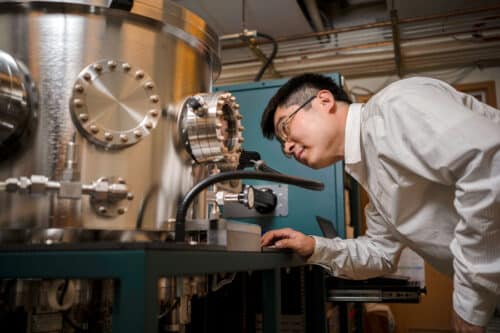MIT researchers utilize a quantum property known as electron spin to build low-power, high-performance programmable computer chips.

A major challenge for the development and implementation of future technology is power. Smarter technologies require more processing and therefore more input power. Advancement in battery technology or power generation technology has been an idea for a long time. But now, it is time to reach out to the application technology itself.
Luqiao Liu, a newly tenured associate professor in the Department of Electrical Engineering and Computer Science and a member of the Research Laboratory of Electronics developed a way to utilize spin electronics, a quantum property of subatomic particles to achieve low power high performance computer chips.
Electrons don’t technically rotate on an axis like a top, but they do possess the same kind of spin. Their angular momentum can be pointing “up” or “down.” Instead of using positive and negative electric charges to represent binary information (1s and 0s) in electronic devices, engineers plan to use the binary nature of electron spin.
As it takes less energy to change the spin direction of electrons, electron spin can be used to switch transistors in electronic devices using much less power than with traditional electronics. Transistors, the basic building blocks of modern electronics, are used to regulate electrical signals.
Also, due to their angular momentum, electrons behave like tiny magnets. Researchers can use these magnetic properties to represent and store information in computer memory hardware. Liu and his collaborators are aiming to accelerate the process, removing the speed bottlenecks that hold back lower-power, higher-performance computer memory devices.
Signal isolation in quantum computing is critical – the information must flow in only one direction from the quantum circuit to the external circuit. He is exploring the use of a phenomenon known as a spin wave, which is the excitation of electron spin inside magnetic materials, to ensure the signal only moves in one direction. In the future, he envisions using antiferromagnetic materials in tandem with existing technologies to create hybrid computing devices that achieve even better performance.









